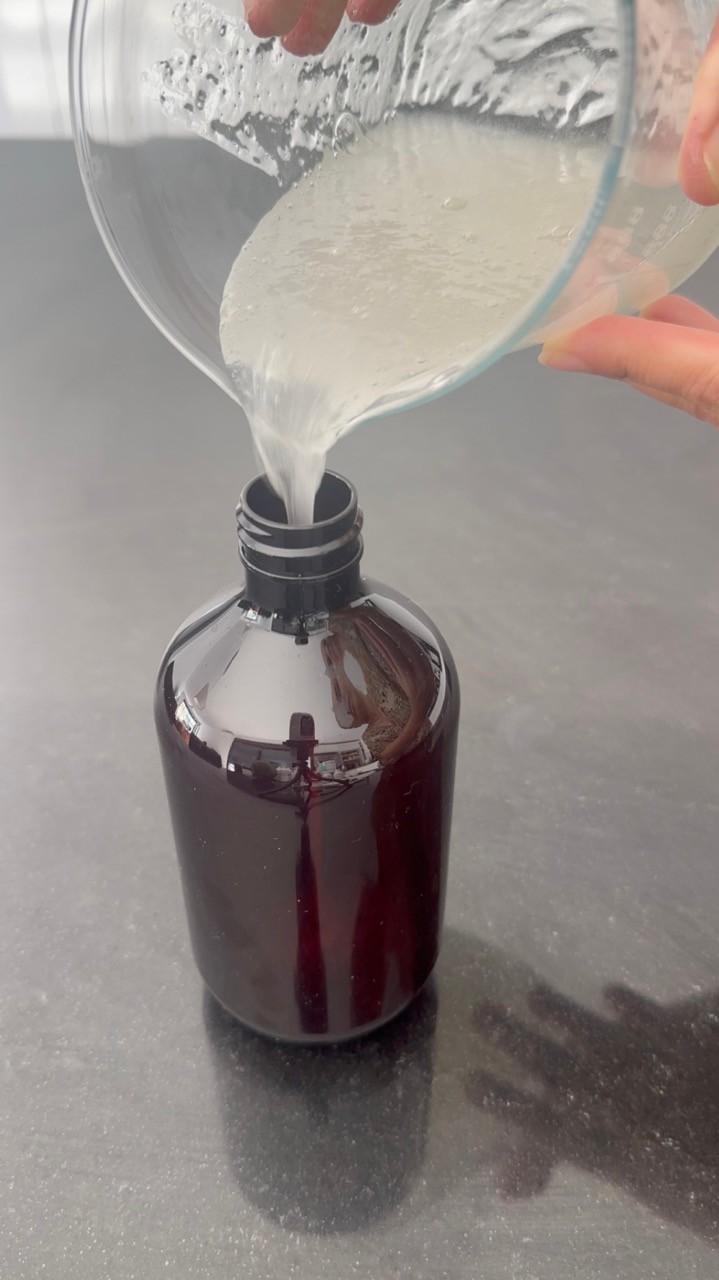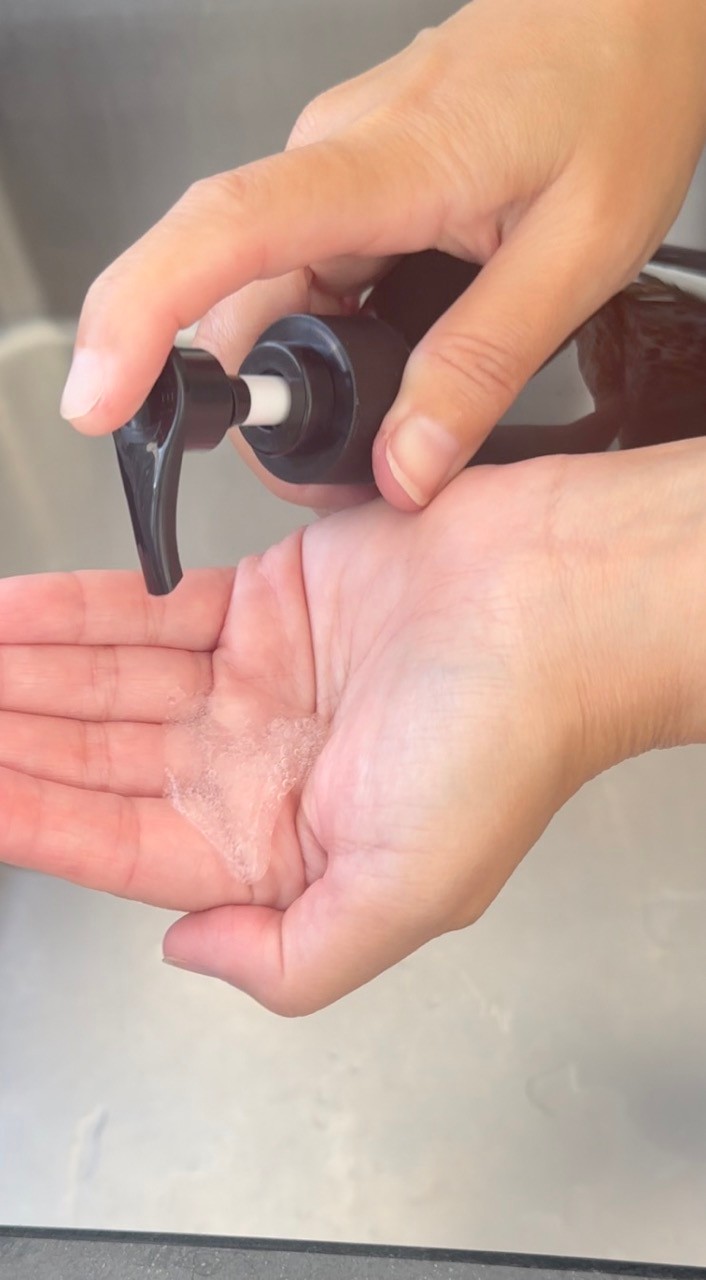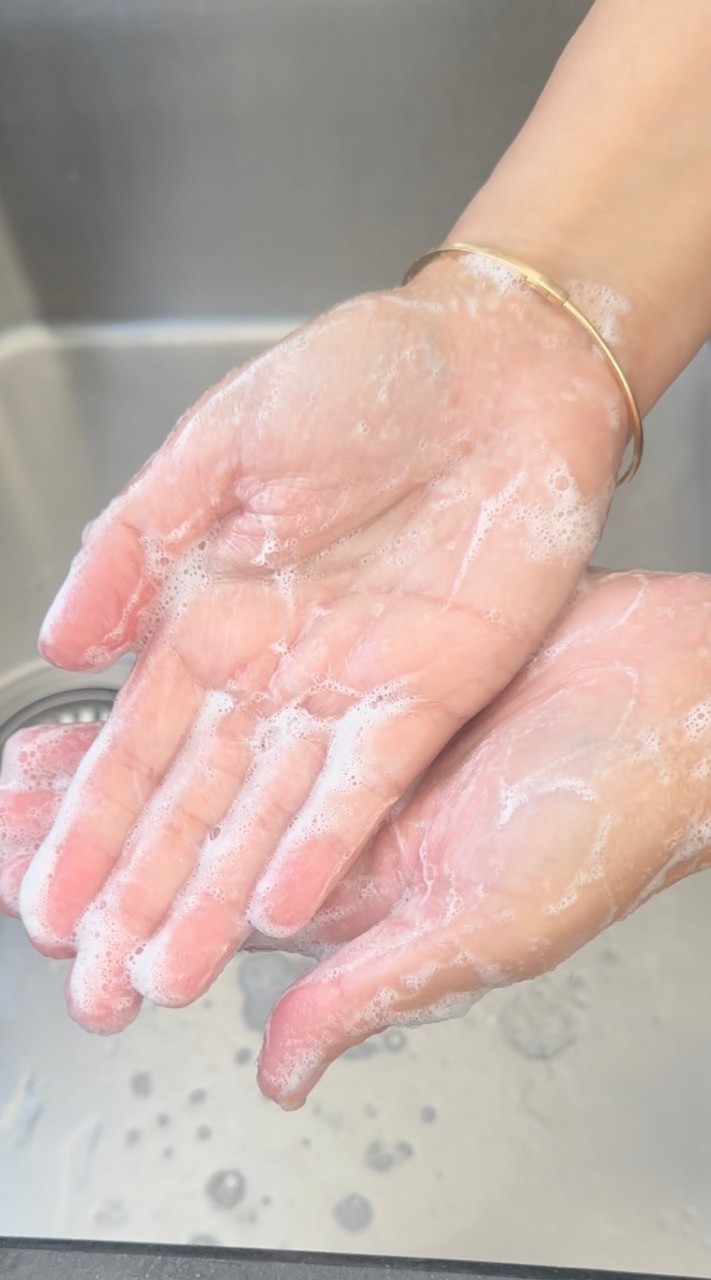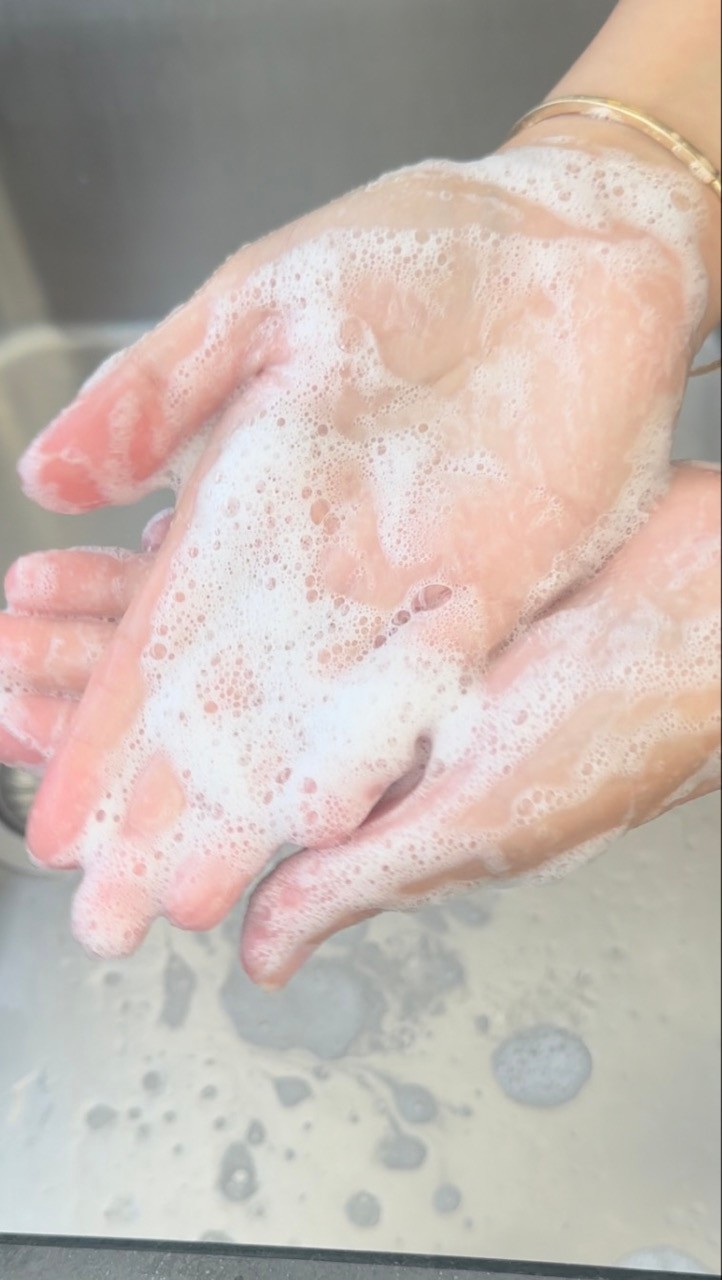Glucoside Face Cleanser
| Phase | Ingredient | Percent (%) | Weight (g) |
|---|---|---|---|
| Phase A | Xanthan gum soft | 1.3 | 1.3 |
| Glycerin | 8 | 8 | |
| Distilled water | 64.3 | 64.3 | |
| Citric acid | 1.4 | 1.4 | |
| Phase B | Decyl glucoside | 12 | 12 |
| Coco glucoside | 12 | 12 | |
| Vitamin E | 0.2 | 0.2 | |
| Preservative Cosgard (INCI - Benzyl Alcohol, Dehydroacetic Acid, Aqua) | 0.8 | 0.8 |
You can help support my website and channel through the “buy me a coffee” page.
Here is the link: https://www.buymeacoffee.com/diycosmetica
Your support helps me keep sharing here more information and more formulas.
This gel cleanser is suitable for all skin types; both surfactants in this formula are plant-derived and gentle on the skin. In this post, you can read about the ingredients I used for this product.
This glucoside cleanser is inspired by The Ordinary glucoside foaming cleanser.
For more cleanser check the Rinse Off Foaming Cleanser Inspired By Clinique, the Foaming Body And Face Cleanser or the Glycolic Acid Foaming Cleanser.
This glucoside cleanser has a simple formula and is designed to cleanse the skin before applying serum, moisturizer, or sunscreen. You can use this cleanser in the morning and evening.
I used two mild surfactants in this formula: Coco glucoside and Decyl glucoside.
Coco glucoside is a gentle, natural surfactant derived from coconut oil and fruit sugars. Coco glucoside offers an eco-friendly alternative to harsher chemical surfactants, widely used in personal care products such as shampoos, body washes, and facial cleansers. One of the key advantages of coco glucoside is its mildness. It cleanses the skin and hair without stripping away natural oils, making it ideal for sensitive skin and baby products.
This non-ionic surfactant produces a stable, creamy foam, enhancing the sensory experience of using personal care products. Coco glucoside is biodegradable, and in addition to its cleansing properties, it can also emulsify a small amount of oil-based ingredients, which helps to blend them in a formulation (in this formula, we use vitamin E, which is oil-based).
Decyl glucoside is a natural, non-ionic surfactant derived from glucose and the fatty alcohol decanol sourced from coconut or palm kernel oil. Renowned for its gentle cleansing properties, decyl glucoside has become a staple ingredient in many personal care products, including shampoos, body washes, facial cleansers, and baby care formulations.
One of the primary benefits of decyl glucoside is its exceptional mildness. It effectively removes dirt, oil, and impurities without disrupting the skin's natural moisture barrier. This makes it an excellent choice for sensitive skin and for use in products designed for infants. Unlike some harsher synthetic surfactants, decyl glucoside does not cause irritation or dryness, which helps maintain healthy, hydrated skin.

In addition to its gentle nature, decyl glucoside is highly versatile. It produces a rich, stable foam, enhancing the sensory experience of personal care products. Decyl glucoside, similar to Coco glucoside, also acts as an emulsifier and solubilizer and helps blend various ingredients within a formulation.
Although both surfactants have similarities, they also have many differences: These surfactants are sourced differently; Coco Glucoside is derived from the combination of coconut oil and glucose, while Decyl Glucoside is derived from glucose's reaction with decanol (a fatty alcohol derived from coconut oil or palm kernel oil).
Coco glucoside is considered milder than decyl glucoside and is suitable in baby's products and a mild surfactant.
Coco Glucoside tends to create a thicker, more viscous texture in formulations, while Decyl Glucoside usually creates a thinner, more fluid texture, which can be desirable for lightweight, easy-rinse formulations.
Combining these two surfactants enhances overall cleansing efficacy without compromising on mildness. Coco glucoside produces a rich, creamy foam, while decyl glucoside generates a dense, stable foam. Together, they create a luxurious lather, enhancing the user experience. Known for their mildness, both surfactants help maintain the skin's natural moisture barrier and reduce the risk of irritation. This makes the formulation ideal for sensitive skin.
In this formula, I used a high percentage of glycerin. Glycerin is a powerful humectant that attracts water from the environment and deeper skin layers to the surface, providing lasting hydration and preventing dryness. By maintaining moisture levels, glycerin strengthens the skin's natural barrier. It also has a calming effect, reducing irritation and inflammation. Additionally, glycerin keeps the skin feeling soft and smooth. Being non-comedogenic, it won't clog pores, making it suitable for all skin types, including oily and acne-prone skin.
I also used citric acid in this glucoside cleanser. Citric acid is an alpha hydroxy acid (AHA) that gently exfoliates the skin by breaking down the bonds between dead skin cells, promoting cell turnover, and revealing a smoother, brighter complexion. It helps adjust and stabilize the pH level of the face wash, keeping it within a skin-friendly range. Additionally, citric acid has antioxidant properties that protect the skin from environmental damage.
I also added vitamin E for its anti-inflammatory and antioxidant properties. Vitamin E also has moisturizing properties.
I didn't add fragrance to this formula since this cleanser is designed for all skin types.
pH of the final product should be around 5.5-6.
Use the calculator to adjust the amounts you want to make.
Always patch test before use.
Method:
- In a beaker, mix the xanthan gum and the glycerin to create a slurry, then add the distilled water and mix. Use a high-speed blender to ensure the gum is fully dispersed in the mixture.

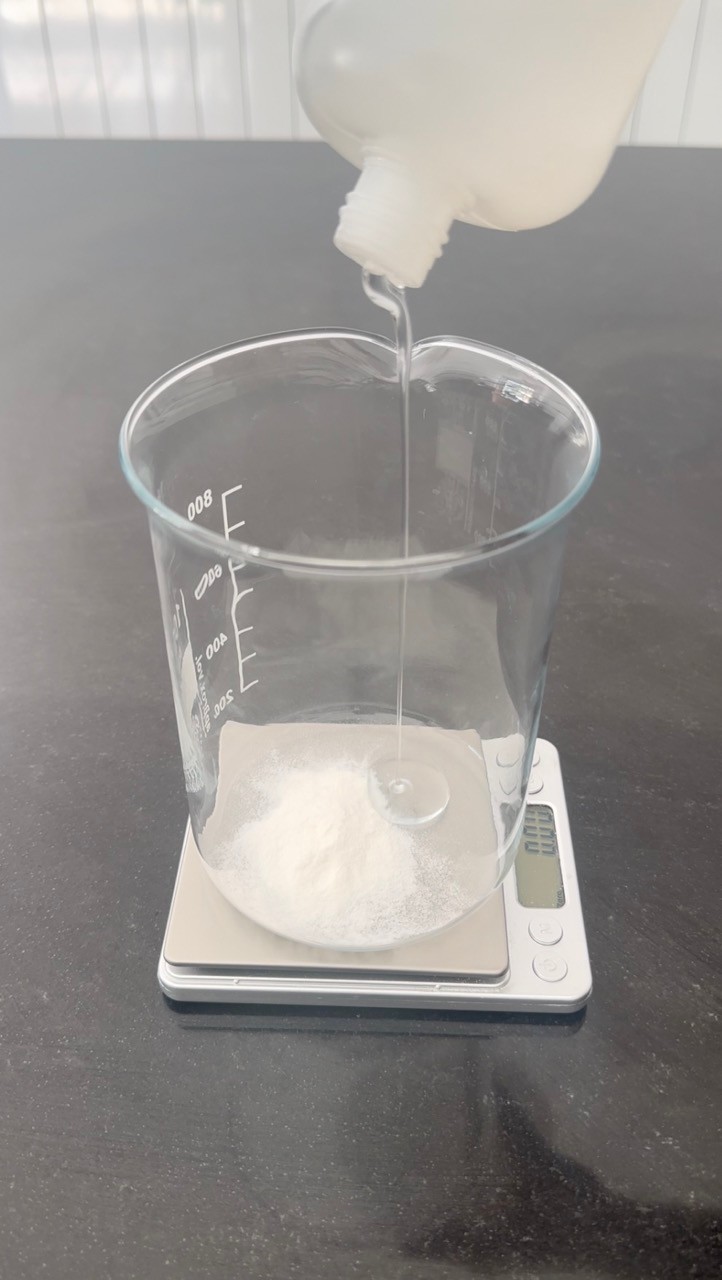
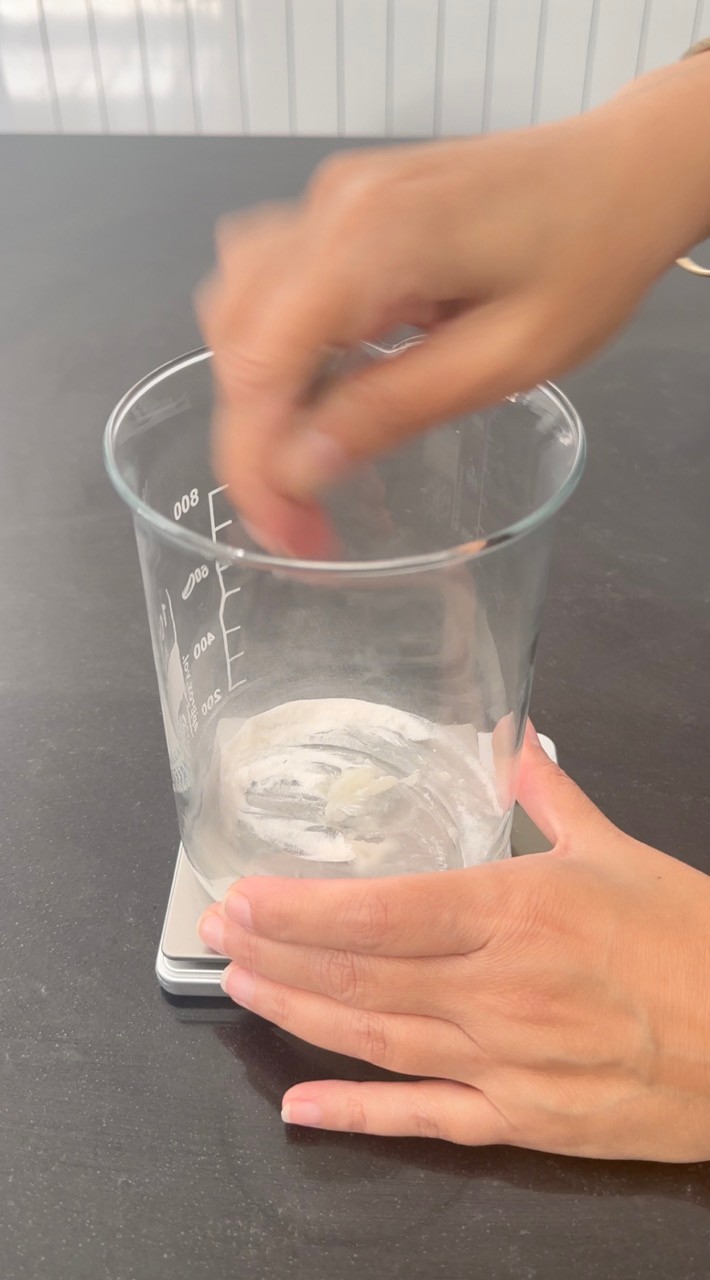
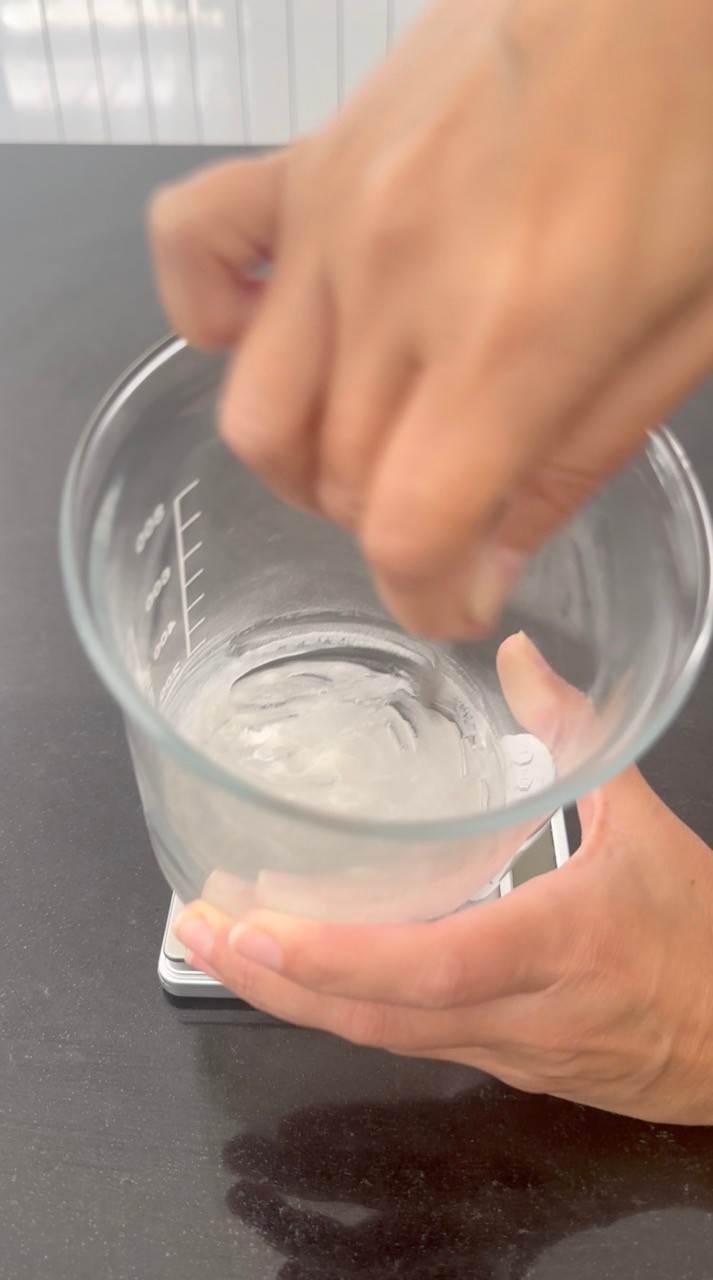
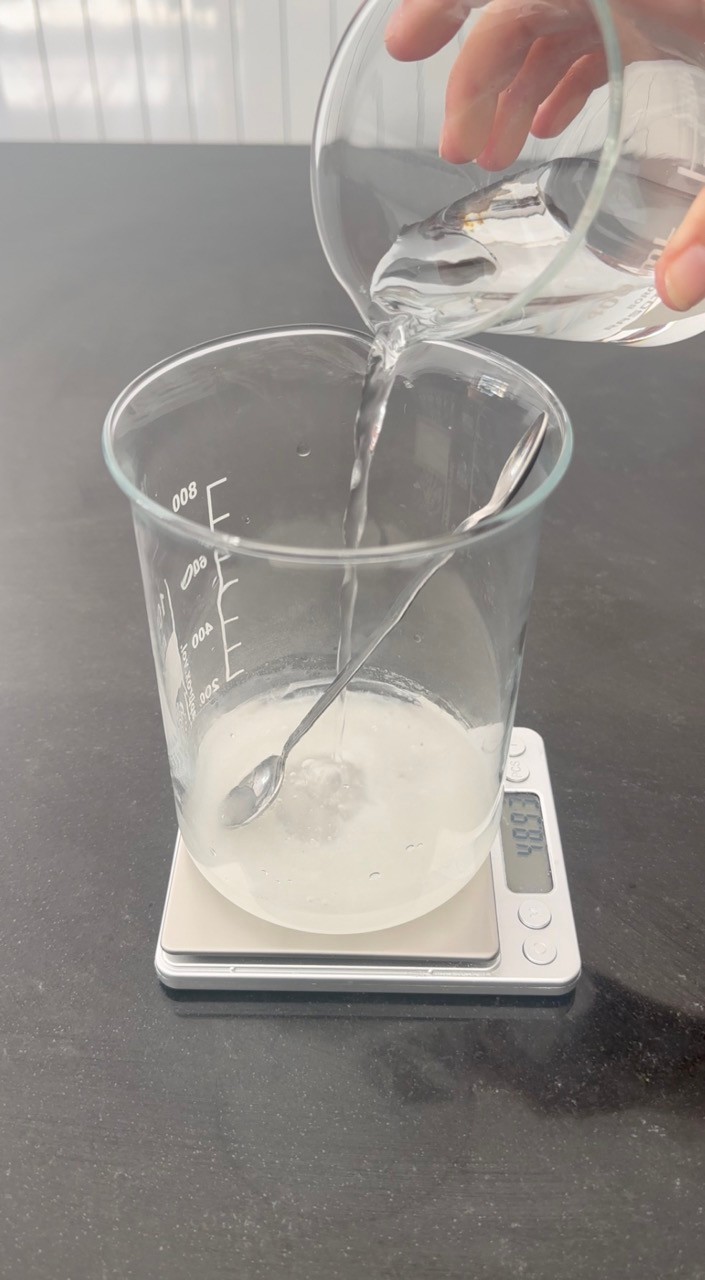
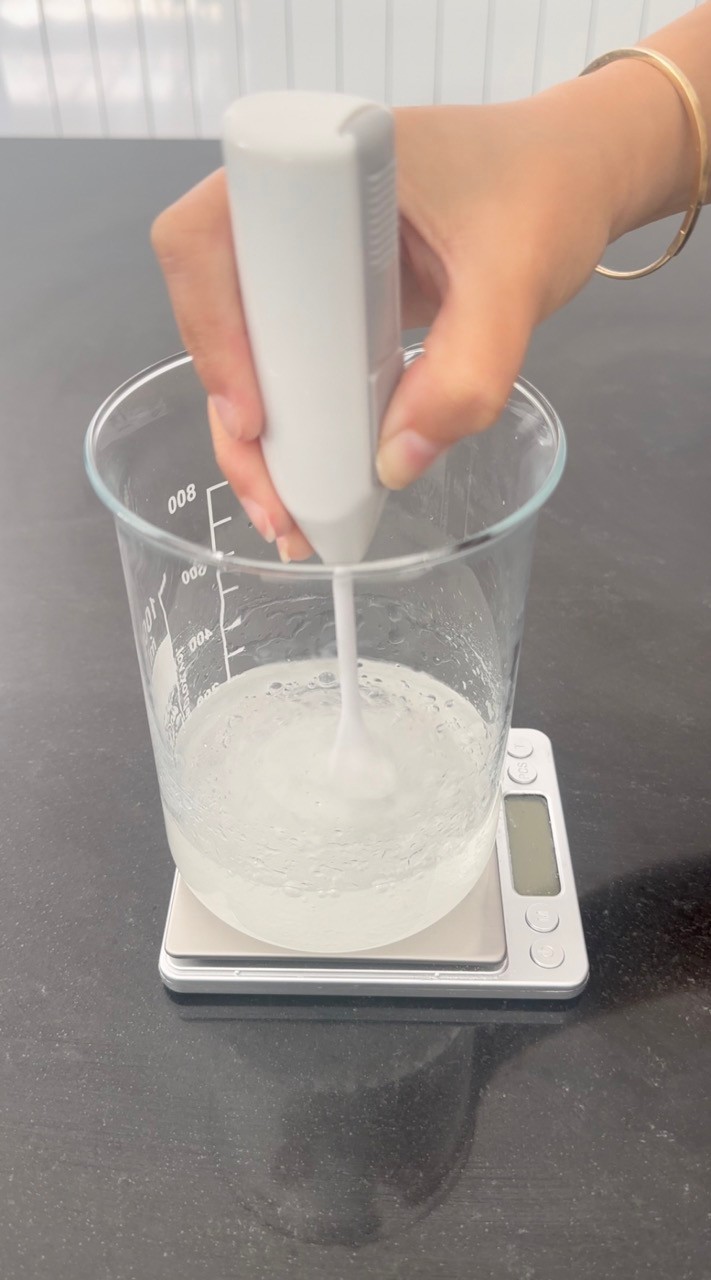
- Add the citric acid and mix to dissolve.
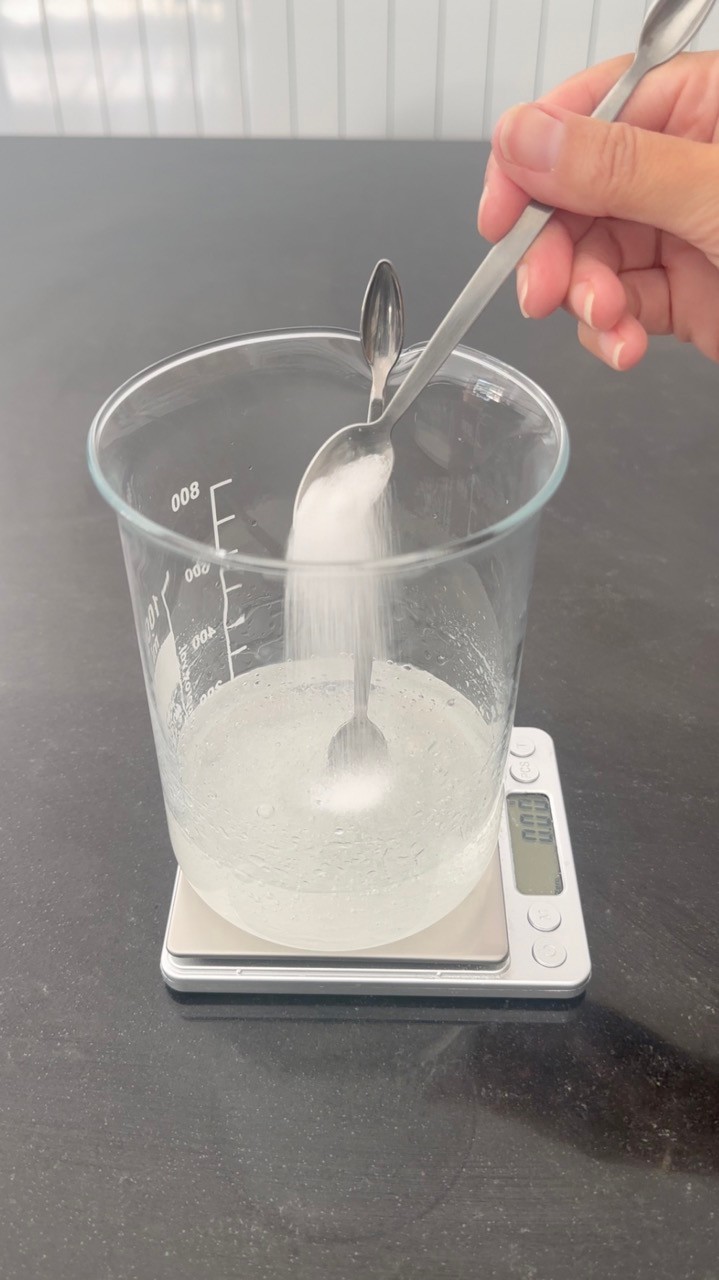
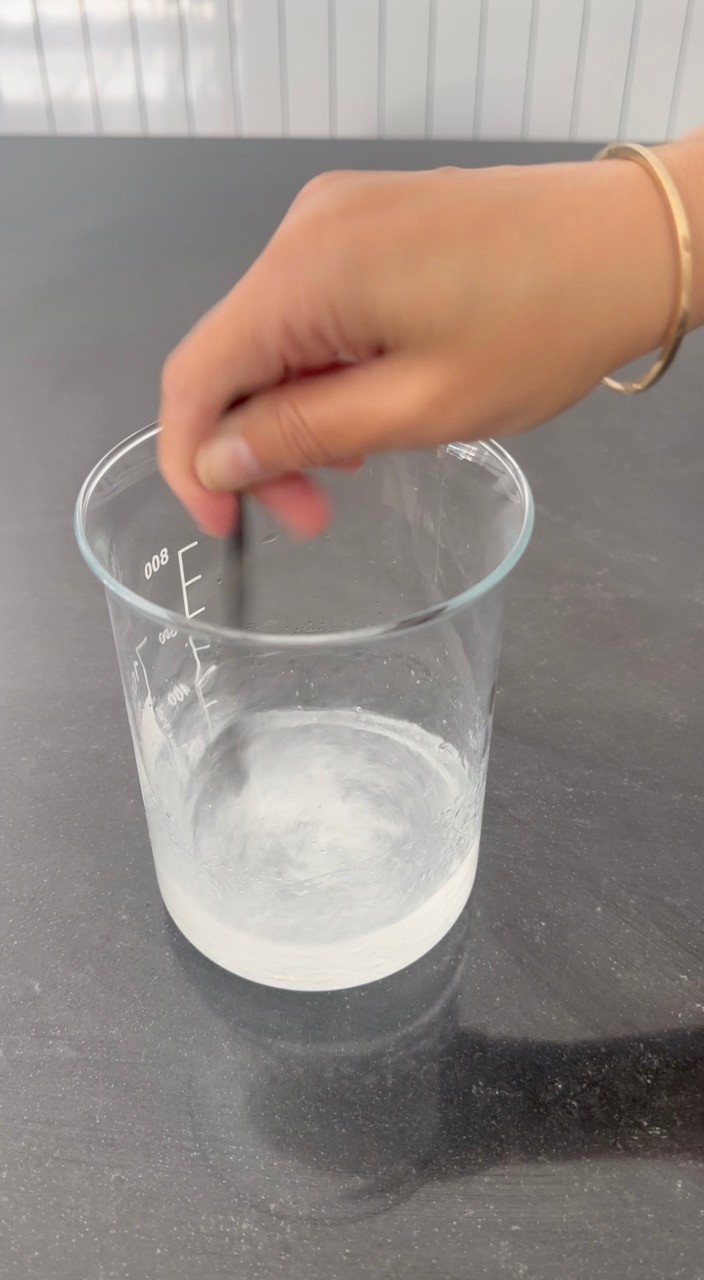
- Add the Decyl glucoside and the Coco glucoside, and stir gently to minimize foam.
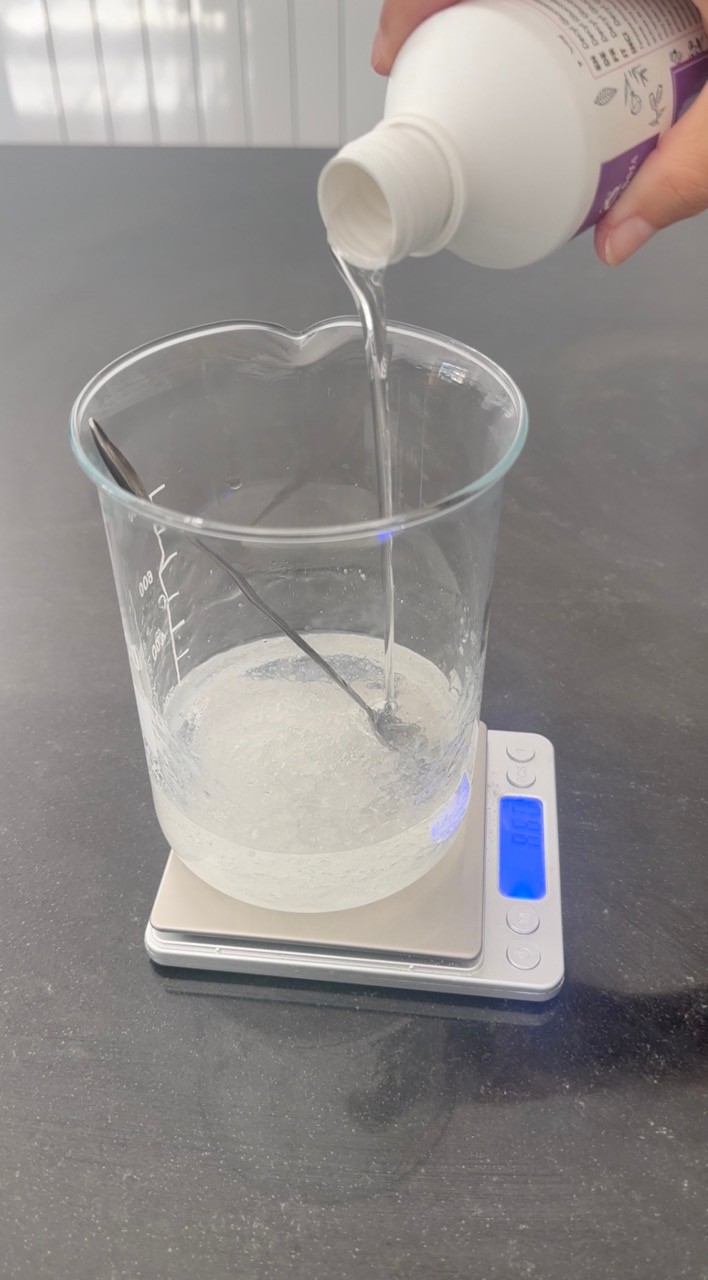
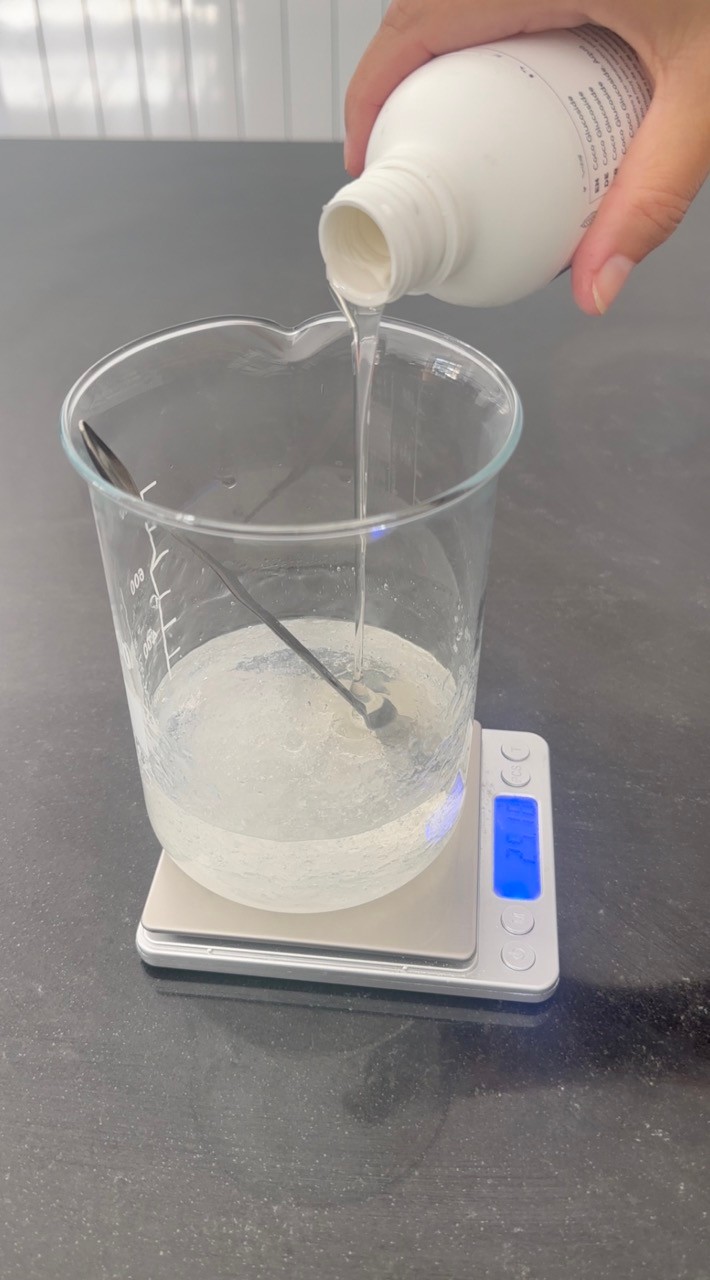
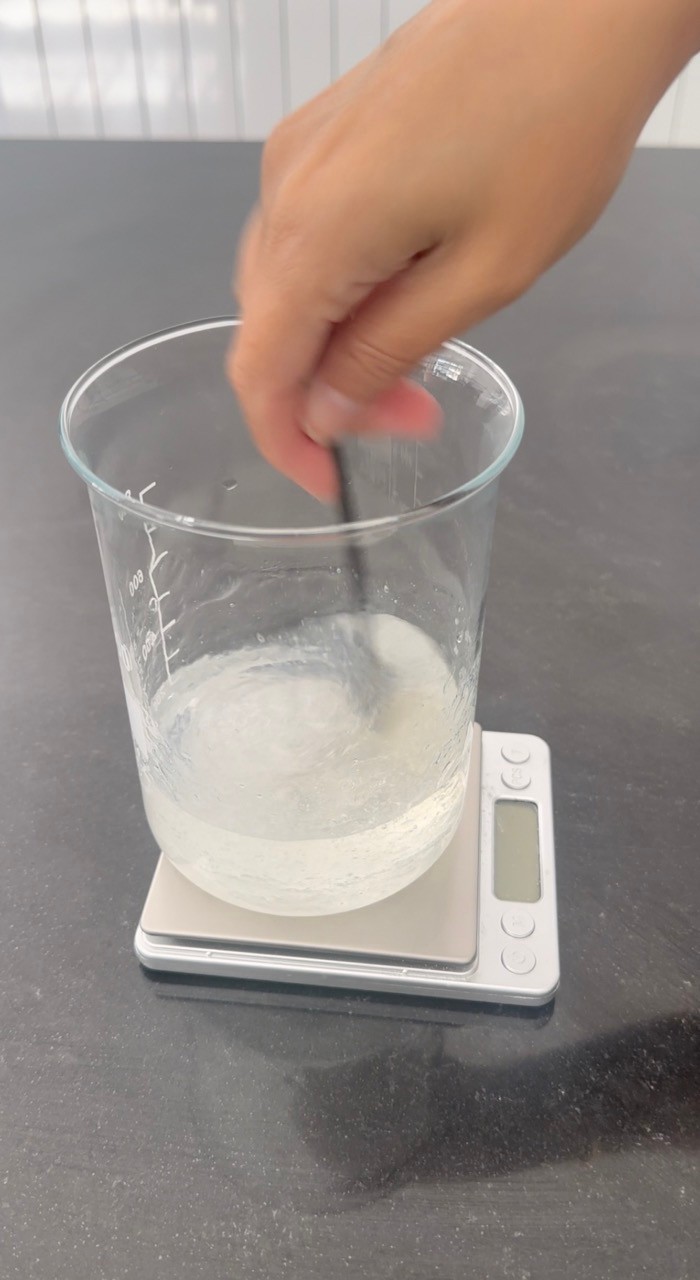
- Add the vitamin E and the preservative and stir to combine.
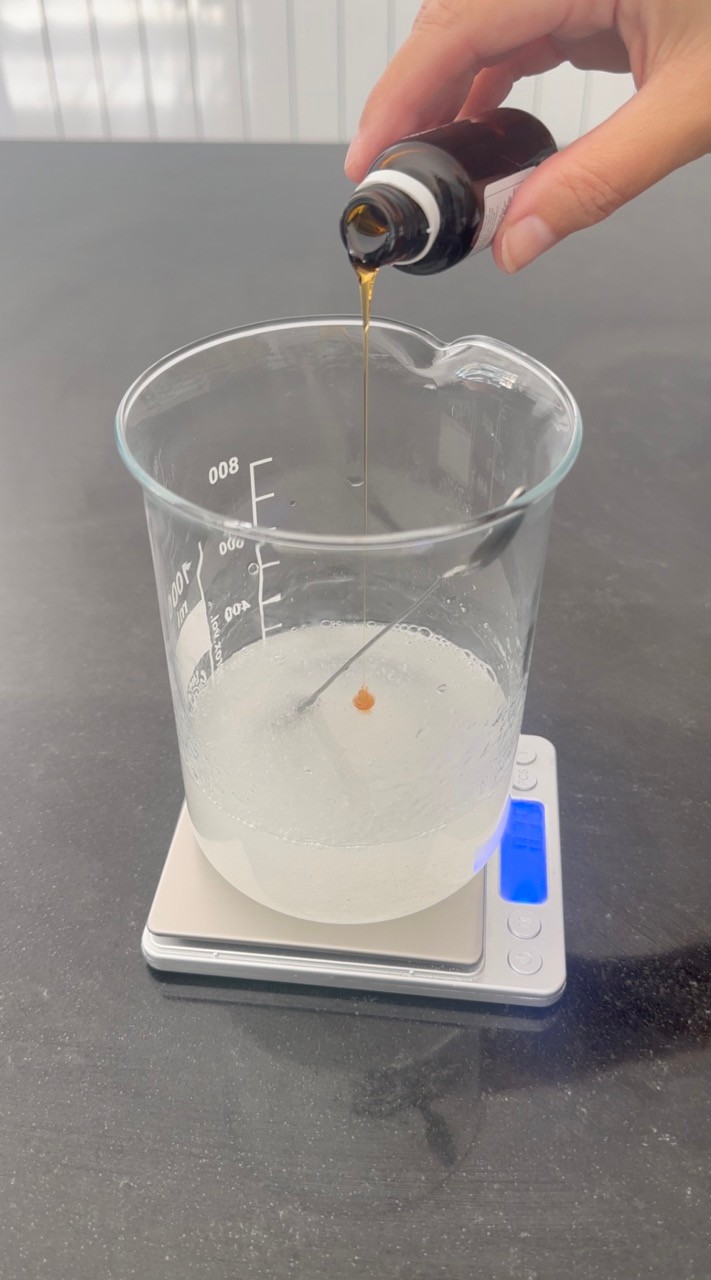

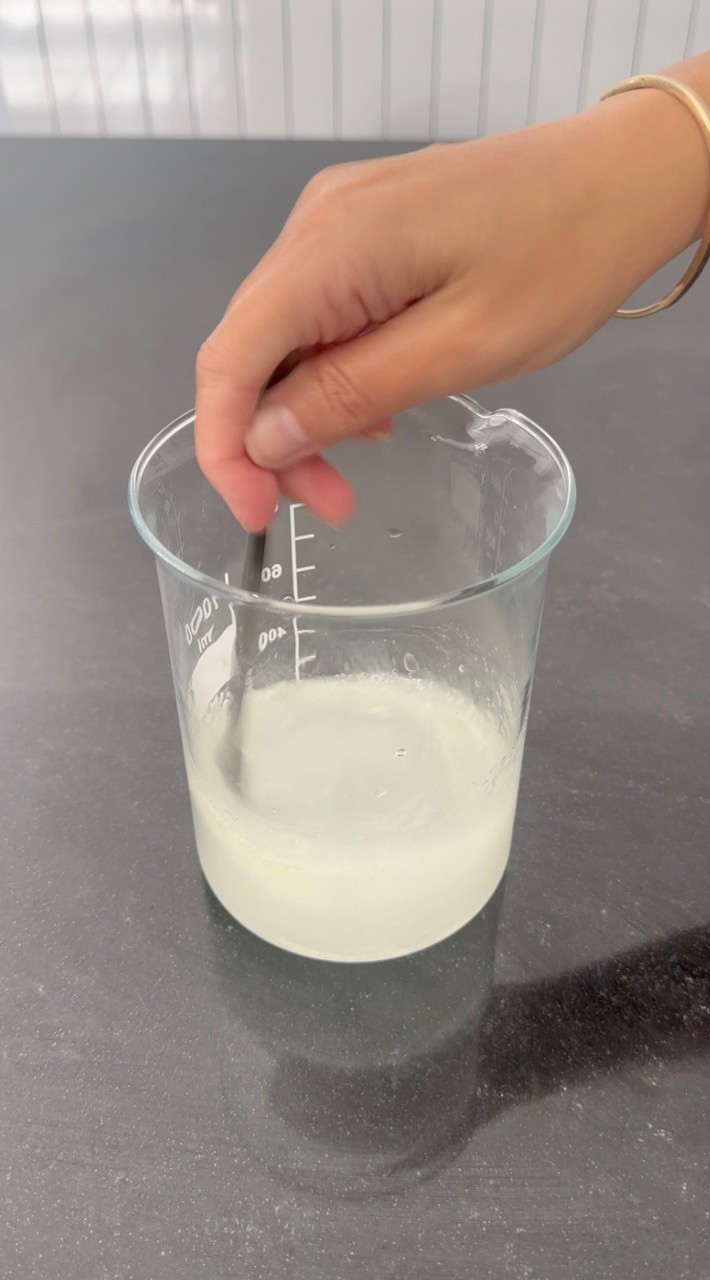
- Check and adjust the pH if necessary. More about pH adjustments in this post.

- Pour into a container of your choice. The glucoside cleanser is ready. It can take up to 24 hours for the gum to fully disperse into the mixture; after 24 hours, you'll have the final consistency.
